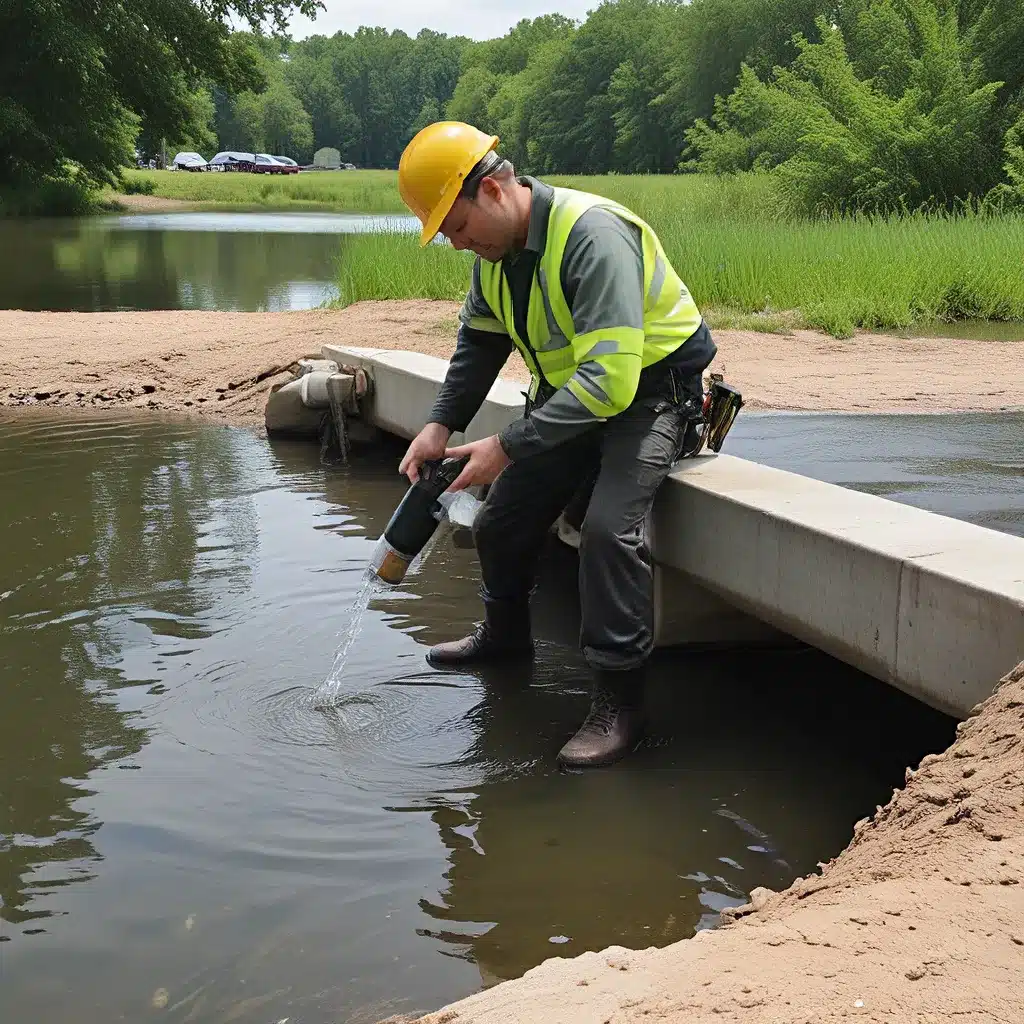
Empowering Water Professionals: Safety Strategies for Environmental Services
As a water professional, I know firsthand the vital role we play in safeguarding the health and well-being of our communities. From ensuring clean drinking water to managing wastewater, our work is the backbone of a thriving, sustainable environment. But with great responsibility comes great challenges, and the safety of our teams is of paramount concern.
Embracing a Culture of Safety
In the dynamic world of environmental services, safety isn’t just a box to check – it’s a way of life. We must cultivate a culture where every member of the team prioritizes protective measures, from the seasoned veteran to the eager newcomer. This means fostering open communication, encouraging ongoing training, and empowering employees to speak up when they identify potential risks.
As the American Public Health Association (APHA) highlights, environmental health is intrinsically linked to public health, with hazardous exposures leading to serious conditions like asthma, heart disease, and even cancer. By proactively addressing safety concerns, we not only safeguard our own well-being but also uphold our commitment to the communities we serve.
Navigating the Diverse Landscape
The world of environmental services is a patchwork of unique challenges, each requiring a tailored approach. Whether we’re dealing with the complexities of wastewater treatment, the hazards of hazardous waste management, or the delicate balance of water conservation, we must be adaptable and well-versed in industry-specific safety protocols.
The Denver Department of Public Health & Environment (DDPHE) exemplifies the multifaceted nature of our work, addressing everything from algae outbreaks to substance misuse and pet welfare. As water professionals, we must be prepared to don a variety of hats, from first responder to environmental scientist, always with safety as our guiding principle.
Empowering Through Education
In the ever-evolving landscape of environmental services, ongoing education and training are the cornerstones of safety. We must stay abreast of the latest industry developments, regulatory changes, and emerging best practices to ensure our teams are equipped to handle any challenge that comes their way.
The National Environmental Health Association (NEHA) emphasizes the importance of cross-disciplinary collaboration, underscoring the need for water professionals to engage with public health experts, policymakers, and community stakeholders. By sharing knowledge and best practices, we can cultivate a more resilient and prepared workforce, ready to tackle even the most daunting safety obstacles.
Fostering Collaboration and Resilience
Safety in environmental services is not a solo endeavor – it requires a concerted effort from all stakeholders, from government agencies to private industry partners. By fostering collaboration and building robust networks, we can leverage collective expertise, share resources, and develop comprehensive safety strategies that benefit everyone.
Disasters, emergencies, and unforeseen events can strike at any moment, testing the mettle of even the most seasoned teams. DDPHE’s commitment to disaster preparedness and response serves as a shining example of the kind of resilience we must strive for, ensuring our communities are protected even in the face of the unexpected.
Prioritizing Equity and Inclusion
As water professionals, we have a moral obligation to ensure the safety and well-being of all community members, regardless of their background or socioeconomic status. APHA’s focus on environmental justice underscores the disproportionate burden that marginalized communities often face when it comes to environmental hazards and health risks.
By actively addressing issues of equity and inclusion, we can empower underserved populations, provide them with the resources and education they need to safeguard their well-being, and ensure that no one is left behind in our pursuit of a healthier, more sustainable future.
Embracing Innovation and Technology
As water professionals, we must be willing to embrace innovative solutions and cutting-edge technologies that can enhance the safety and efficiency of our operations. From advanced monitoring systems to robotic process automation, the digital revolution is transforming the way we approach environmental services, and we must be prepared to adapt and evolve.
By leveraging the power of data, artificial intelligence, and cloud-based platforms, we can streamline our workflows, identify potential risks before they escalate, and better protect our teams and the communities we serve. The future of environmental services is digital, and those who are willing to lead the charge will be the ones who shape the industry for generations to come.
Conclusion: A Shared Responsibility
As water professionals, our role in safeguarding the health and well-being of our communities is a noble and vital one. By cultivating a culture of safety, embracing the diverse challenges we face, empowering our teams through education, fostering collaboration and resilience, prioritizing equity and inclusion, and harnessing the power of innovation and technology, we can ensure that the vital work of environmental services continues to thrive.
At Inland Waters Inc., we are committed to leading the charge in this endeavor, working tirelessly to empower water professionals and create a safer, more sustainable future for all. Join us in this mission, and together, we can build a world where the health and safety of our communities are the top priority.


